Invaders in Lake Erie
White Perch:
White perch are native to Atlantic coastal regions and invaded the Great Lakes through the Erie and Welland canals in 1950. White perch are prolific competitors of native fish species and are believed to have the potential to cause a decline in the Great Lakes walleye population.
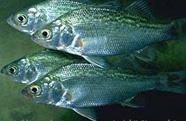
Zebra Mussels:
The zebra mussel is a barnacle-like shellfish that poses a multi-billion-dollar threat to industrial, agricultural and municipal water supplies across North America. Since it was spotted in the Great Lakes in 1988, it has become a nuisance for shipping, boating, fishing and clamming in freshwater as well. Experts believe this invader has the potential to cause more economic damage than the Mediterranean fruit fly.
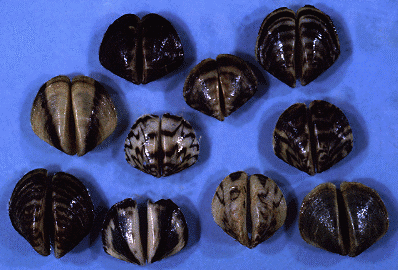

Alewife or Saw Belly
The alewife moved into Ohio sometime after the construction of the Welland Canal in 1829 but was not recorded in Lake Erie until 1931. Since then this non-native herring has increased in numbers but is much less abundant in Lake Erie than the rest of the upper Great Lakes where it has become incredibly abundant.
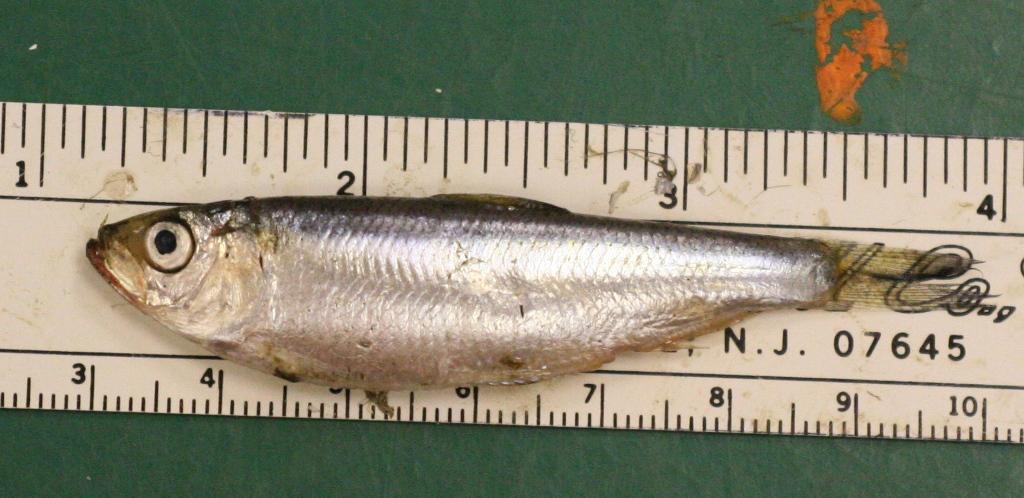
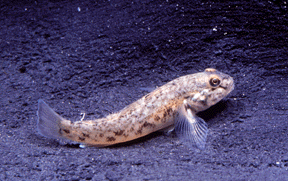
Goby:
Round gobies are an invasive fish that arrived in the Great Lakes basin in 1990 and quickly spread to all five of the Great Lakes and many connecting waterways. These fish compete with native fishes for food and habitat, consume eggs and young of native fishes

Eurasian Ruffe
Ruffe were accidentally introduced to the Great Lakes at the St. Louis River near Duluth, Minnesota in the early to mid-1980s. Ruffe were first collected in the St. Louis River during 1986 and were identified in 1987. The Great Lakes Science Center has been studying the St. Louis River fish community since 1988 to evaluate any impacts the establishment of this exotic species may have on the native fish community.
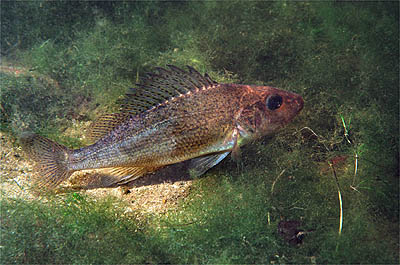
Spiny Water Flea
 The spiny water flea (Bythotrephes cederstroemi), or "B.C.," is not an insect at all, but a tiny (less than half an inch long) crustacean with a long, sharp, barbed tail spine. A native of Great Britain and northern Europe east to the Caspian Sea, the animal was first found in Lake Huron in 1984--probably imported in the ballast water of a trans-oceanic freighter. Since then, populations have exploded and the animal can now be found throughout the Great Lakes and in some inland lakes.
The spiny water flea (Bythotrephes cederstroemi), or "B.C.," is not an insect at all, but a tiny (less than half an inch long) crustacean with a long, sharp, barbed tail spine. A native of Great Britain and northern Europe east to the Caspian Sea, the animal was first found in Lake Huron in 1984--probably imported in the ballast water of a trans-oceanic freighter. Since then, populations have exploded and the animal can now be found throughout the Great Lakes and in some inland lakes.